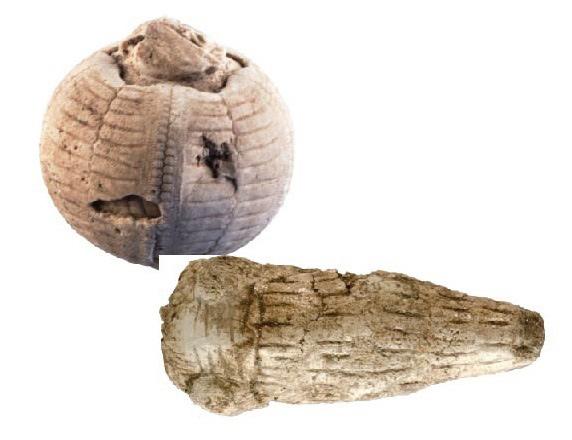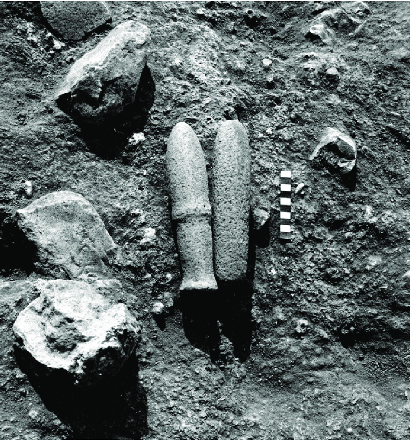You are here
Wadi Hammeh, one of the largest repertoires of Natufian art — archaeologist
By Saeb Rawashdeh - Jun 20,2019 - Last updated at Jun 20,2019

Fossil and carved animal from the Natufian site Wadi Hammeh 27 (Photo courtesy of Phillip Edwards)
AMMAN — Wadi Hammeh 27, located 2 kilometres north of Pella, represents one of the largest and most complex Natufian base-camps in the southern Levant, an Australian archaeologist has said.
“These are essentially the world's first villages [12,000 BC], funded by hunter-gatherers near the end of the Pleistocene [Ice Age], which predated farming,” said Phillip Edwards from La Trobe University in Melbourne.
Wadi Hammeh 27 was discovered when Edwards’ mentor Tony McNicoll asked Australian geologist Phillip Macumber to investigate the geological basis of the Pella tell (Khirbet Fahl) in the 1980/81 season, Edwards said, adding that Macumber explored the area of Wadi Hammeh and found “a virtual El Dorado” of prehistoric occurrencess from the Middle Palaeolithic, Upper Palaeolithic and Early Epipalaeolithic periods.
"I was first asked by director Tony McNicoll to excavate the Early Epipalaeolithic site of Wadi Hammeh 26 in late 1982, as part of my graduate studies. After finishing this, he suggested I sample the interesting-looking larger site overlying it [Wadi Hammeh 27]. So, in early 1983, I placed a small 2x1m sondage into a point that had many different artefacts eroding from the cliff-edge of the site,” Edwards outlined.
The test pit revealed a trio of large, engraved slabs, wedged diagonally in the trench and after this find, and McNicoll was sure of the site’s importance and supported Edwards to work there in 1980s, he noted.
"Scholars found over 60 art pieces of Natufian art at Wadi Hammeh, making it one of the largest such repertoires of Natufian art."
“Apart from the large slabs, art pieces are mainly small and furnished with geometric designs. They mainly consist of small limestone plaques and pieces, with a small number on bone tools,” he said, adding that finds of natural objects such as fossils and unusual stones in the site indicate that some of the designs may have been prompted by natural patterns.
A zoomorphic sickle terminal is one of a small number of representative images of animals, Edwards said, adding that the tiny head was badly burnt and in danger of dissolving altogether.
“It is often difficult to tell exactly which types of animal are represented in Natufian art, even though the pieces are executed with great skill, but we have a gazelle and a bird, and a few indistinguishable animals,” Edwards said, stressing that the gazelle is the most commonly represented animal in Natufian art, "just as it was usually the animal hunted the most".
Related Articles
AMMAN — According to Associate Professor Phillip Edwards from the La Trobe University, the major objective of the 2024 season in Jordan was
AMMAN — Different teams of Australian archaeologists have been "very active" in northern and northwestern parts of Jordan.
AMMAN — Hundreds of thousands of miniscule stone flakes, some only millimeters in length, the scattered results of the hammering and bashing

















